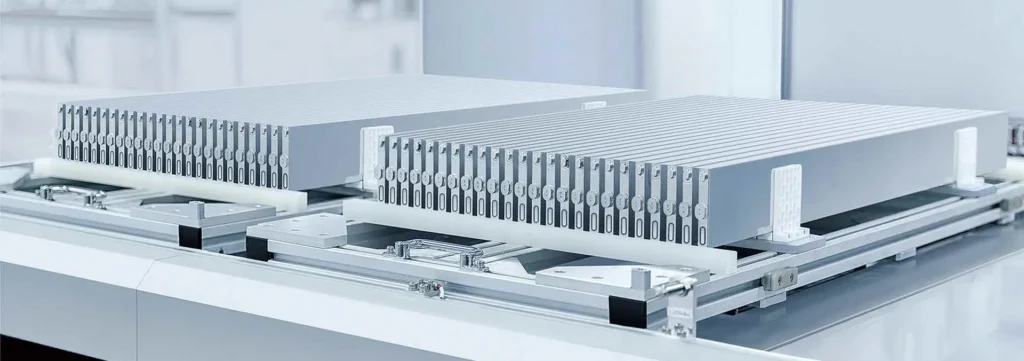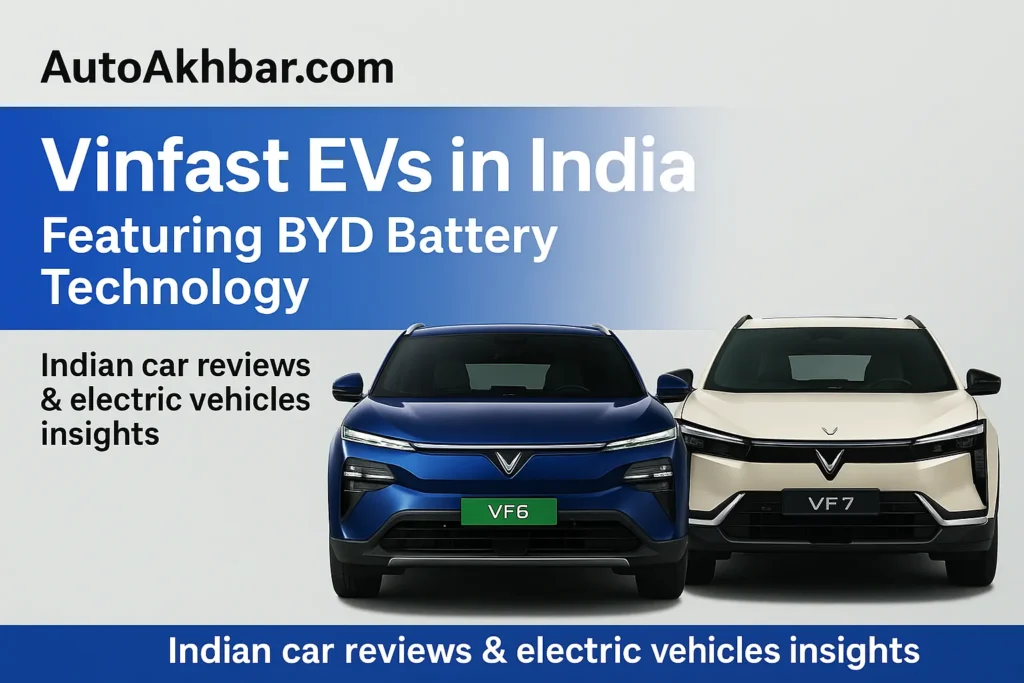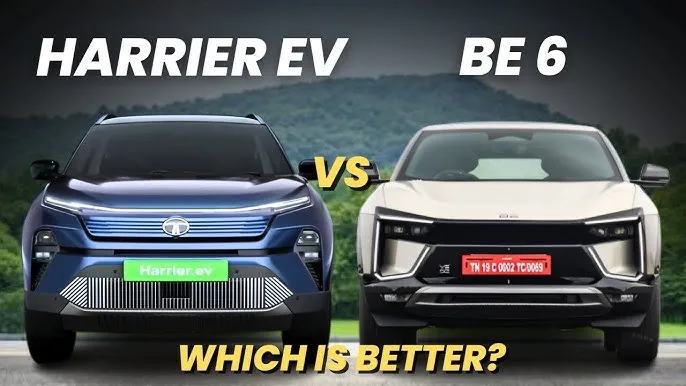
Table of Contents
Tata Motors has officially launched the all-electric Harrier EV — an SUV that transcends traditional category benchmarks and redefines what vehicles manufactured in India can achieve. Its introductory price has been kept at ₹2.49 lakh, and it promises an adventurous experience with high-end sophistication.
Where Harrier EV is based on Tata’s reliable IC legacy with an electric twist, the BE 6 from Mahindra showcases a futuristic approach under its Born Electric platform — delivering a perfect combination of performance, technology, and design. Tata positions the Harrier EV as the most advanced rugged 4×4 EV to date.
So, which one is better — Tata Harrier EV or Mahindra BE 6? Let’s compare both EVs to find out.
Dimensions
| Harrier EV | Mahindra BE 6 | |
| Length | 4,467 mm | 4,371 mm |
| Width | 2,132 mm | 1,997 mm |
| Height | 1,740 mm | 1,627 mm |
| Wheelbase | 2,741 mm | 2,775 mm |
| Ground clearance | 205 mm | 207 mm |
| Boot space | 502 litres | 455 litres |
| Frunk | 67L (65 kWh variant), 37L (75 kWh variant) | 45 litres |
Verdict: Tata Harrier EV is more spacious and practical with better road presence
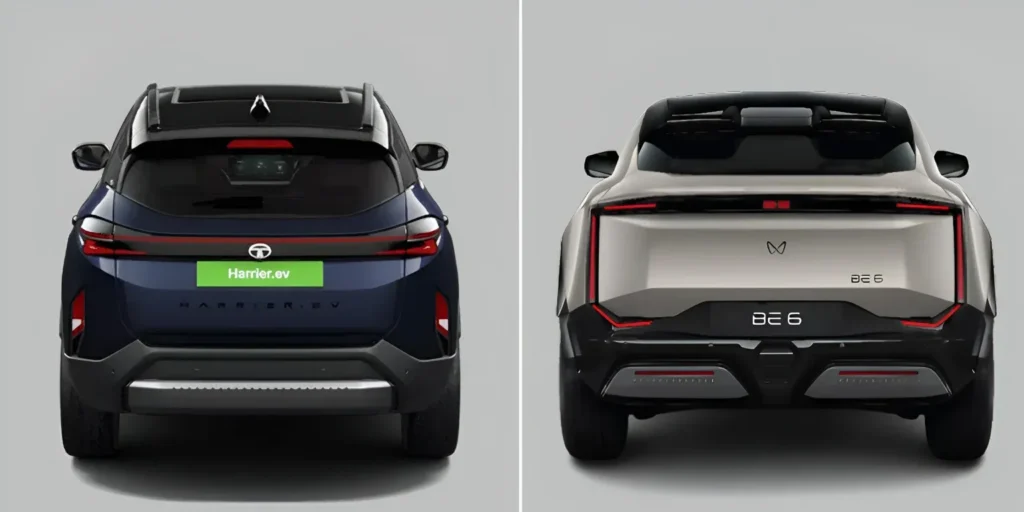
Battery & Range
Harrier EV
| 65 kWh variant | Up to 505 km |
| 75 kWh variant | Up to 627 km |
Mahindra BE 6
| 65 kWh variant | Up to 505 km |
| 75 kWh variant | Up to 627 km |
➡️ Fact: Mahindra BE 6 with 79 kWh battery offers the longest range in its segment — up to 683 km on a single charge.
Verdict: Mahindra BE 6 offers better range and efficiency.
Power & Performance
Harrier EV
| 65 kWh | 235 bhp / 504 Nm (Single motor, RWD) |
| 75 kWh | 390 bhp / 504 Nm (Dual motor, AWD) |
Mahindra BE 6
| 59 kWh | 228 bhp / 380 Nm (Single motor, RWD) |
| 79 kWh | 282 bhp / 380 Nm (Single motor, RW |
➡️ Fact: Harrier EV (75 kWh AWD) is the most powerful electric SUV in its category with 390 bhp.
Verdict: Harrier EV leads with AWD and significantly higher power output.
Charging
| Harrier EV | Supports 3.3 kW, 7.2 kW AC and 120 kW DC charging |
| BE 6 | Supports 3.2 kW, 7.2 kW, 11.2 kW AC and 180 kW DC charging |
Verdict: BE 6 offers faster DC charging support up to 180 kW.
Battery Warranty
Both vehicles offer unlimited battery warranty (10 years transferable)
Exterior Design
Common Features: LED headlamps/taillamps/DRLs, disc brakes, parking sensors, ORVMs, spoiler, defogger, auto headlamps, rain-sensing wipers, panoramic sunroof, auto park assist, 19” alloys, hands-free boot, fog lamps
| Harrier EV Unique Features | Full-width LED DRLs and tail lamps, shark fin antenna, visible rear wipers, roof rails, normal door handles |
| BE 6 Unique Features | Flush door handles, coupe-like shape, bonnet air scoops, hidden rear wipers, C-pillar mounted rear handles |
Interior & Features
| Harrier EV Unique Features | BE 6 Unique Features | |
| Infotainment | 14.53-inch Samsung QLED infotainment | 12.3-inch infotainment |
| Digital Cluster | 10.25-inch digital cluster | 12.3-inch digital cluster |
| Speaker System | JBL 10-speaker system | 16-speaker Harman Kardon system |
| Other | Six terrain modes, summon mode, off-road assist, 540° view with transparent mode, rear sunshades, sliding armrest, B2V & B2L tech, e-IRVM with DVR | Driver drowsiness detection, dual wireless charging, selfie camera, Grow party track mode, fixed panoramic sunroof, heads-up display |
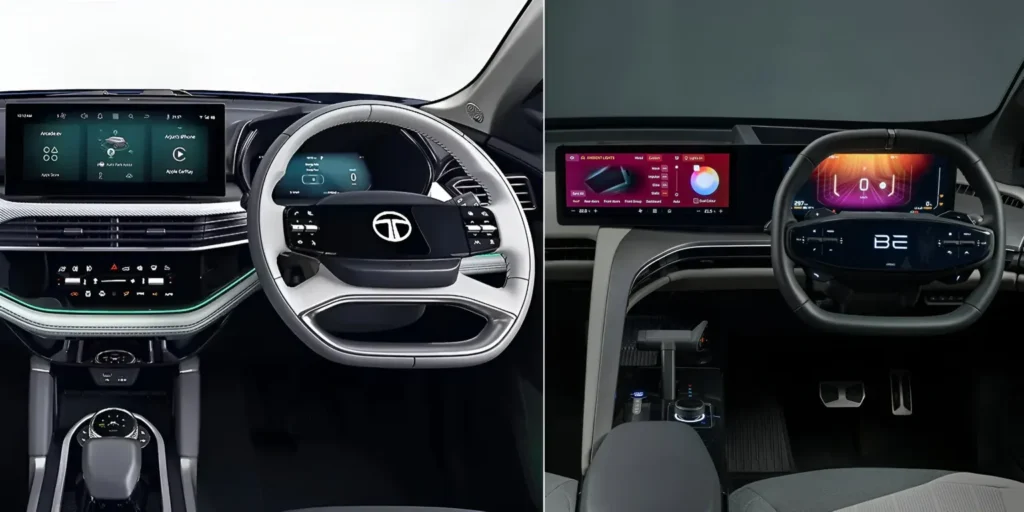
Safety
- Both get 7 airbags, Level 2 ADAS, and 5-star BNVSAP ratings (Harrier’s platform shared with Punch EV, also 5-star rated)
- Safety Features: ABS, ESC, TPMS, Hill Hold, Traction Control, ISOFIX, and Drive Modes in both
➡️ Fact: Harrier EV’s platform is derived from Omega Arc (from Land Rover’s D8), known for its high structural integrity and 5-star safety.
Final Verdict
Tata Harrier EV and Mahindra BE 6 are flagship EVs with different strengths:
- Choose Harrier EV for: performance, off-road capability, AWD, terrain modes, and rugged design
- Choose BE 6 for: futuristic design, longer range, tech-rich cabin, and efficiency
Conclusion: If your priority is rugged performance and practicality, Harrier EV is the better choice. But for futuristic looks and high-range urban use, BE 6 excels.
🔗 Also read: Best Car in Rs.15 Lakhs (2025) | BYD Battery Technology Explained

